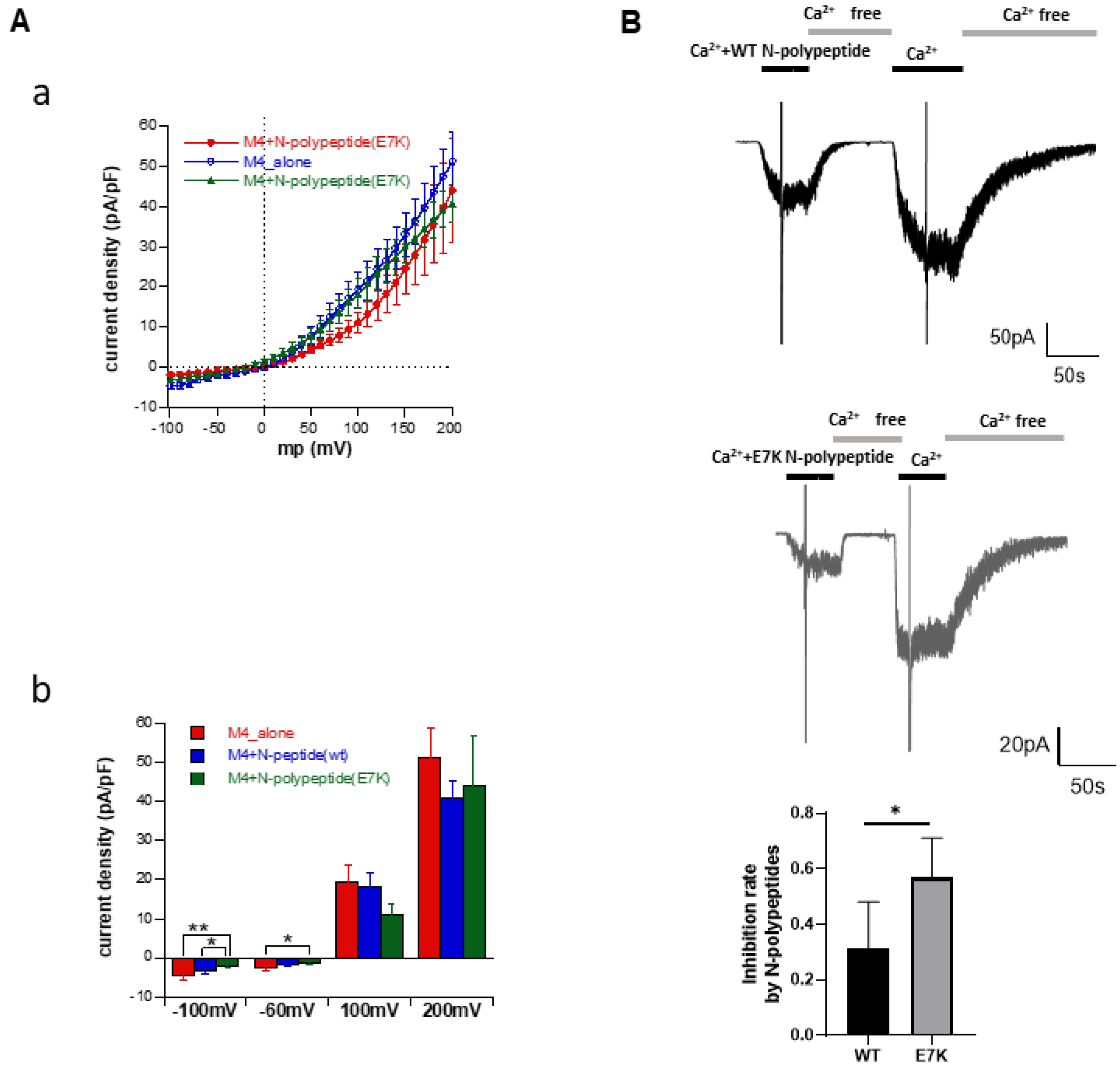Fig. 5 Different degrees of inhibition by WT- and E7K-N-terminal polypeptides of TRPM4 channels. (A) Current-voltage (I-V) relationships of full-length WT-TRPM4 channel co-expressed in HEK293 cells with either WT- or E7K-N-terminal polypeptides (the first 100 amino acid residues), or an empty vector alone (a). TRPM4 current was induced by 1 μM Ca2+ under the whole-cell conditions. The densities of inward and outward TRPM4 currents were compared at membrane potentials of −120, −60, 100, and 200 mV (b). The E7K polypeptide was more effective than WT polypeptide at inhibiting whole-cell TRPM4 currents. *: p < 0.05 with ANOVA followed by Tukey’s post hoc tests (n = 7). Only the pairs of columns that show statistically significant differences are shown. (B) Direct application of short synthetic N-terminal polypeptides containing the ‘WT’ and ‘E7K’ sequences suppressed single-TRPM4 channel activities induced by 100 μM Ca2+ at −60 mV. Representative data from two inside-out patches showing greater inhibition by E7K- than WT polypeptides. *: p < 0.05 with unpaired t-test, respectively (n = 5).
Image
Figure Caption
Acknowledgments
This image is the copyrighted work of the attributed author or publisher, and
ZFIN has permission only to display this image to its users.
Additional permissions should be obtained from the applicable author or publisher of the image.
Full text @ Cells

